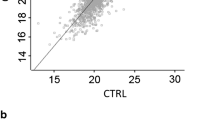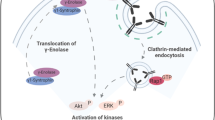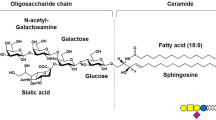Abstract
Previous studies from this laboratory and others have suggested the evidences that acidic glycosphingolipid, ganglioside GM1 (GM1), is an endogenous regulator of high affinity nerve growth factor receptor, Trk, which is an essential factor for the normal development and differentiation of neuronal cells by forming a complex with Trk. The present study was aimed to examine whether Trk expressed in cells that are deficient in endogenous GM1 due to the mutation of GM1 synthase gene (NG-CR72 cells) is responsive to its ligand nerve growth factor and how genetic restoration of GM1 synthase gene by a stable transfection of the gene affects the function of the Trk protein. The data clearly showed that (1) confocal lazor microscopic studies disclosed NG-CR72 cells are really deficient in GM1, (2) stable transfection of GM1 synthase cDNA into these cells (NG-CR72G cells) restores the expression of GM1 in the cells, and (3) Trk protein is expressed in NG-CR72 cells but its location seemed not to be on the plasma membrane, whereas we clearly observed that the Trk protein is expressed on the plasma membrane in NG-CR72G cells. (4) NGF did not elicit the autophosphorylation of the Trk protein in GM1 deficient NG-CR72 cells but did elicit the activation of the Trk protein in NG-CR72G cells with an activation of mitogen activated protein kinase. These studies strongly suggested that GM1 is necessary for the normal expression of the Trk protein function and for normal targeting of the Trk protein to the plasma membrane.
Similar content being viewed by others
REFERENCES
Masserini, M., Sonnino, S., and Tettamanti, G. 2001. Role of glycosphingolipids in formation and function of membrane microdomain. Trends Glycosci. Glycotech. 13:239-250.
Mutoh, T. 2001 Biological implication of the membrane rafts in neuronal cells. Trends Glycosci. Glycotech. 13:291-299.
Bilderback, T. R., Gazula, V.-R., Lisanti, M. P., and Dobrowsky, R. T. 1999. Caveolin interacts with TrkA and p75NTR and regulates neurotrophin signaling pathways. J. Biol. Chem. 274:257-263.
Pitto, M., Mutoh, T., Kuriyama, M., Ferraretto, A., Palestini, P., and Masserini, M. 1999. Influence of endogenous GM1 ganglioside on TrkB activity in cultured cerebellar granule cells. FEBS Lett. 439:93-96.
Mitsuda, T., Furukawa, K., Fukumoto, S., Miyazaki, H., Urano, T., and Furukawa, K. 2002. Over-expression of ganglioside GM1 results in the dispersion of platelet derived growth factor receptor from glycolipid-enriched microdomains and in the suppression of cell growth signals. J. Biol. Chem. (in press).
Mutoh, T., Tokuda, A., Guroff, G., and Fujiki, N. 1993. The effect of the B subunit of cholera toxin on the action of nerve growth factor on PC12 cells. J. Neurochem. 60:1540-1547.
Fishman, P. H. 1982. Role of membrane gangliosides in the binding and action of bacterial toxins. J. Membr. Biol. 69:85-97.
Mutoh, T., Tokuda, A., Miyadai, T., Hamaguchi, M., and Fujiki, N. 1995. The ganglioside GM1 binds to the Trk protein and regulate the receptor function. Proc. Natl. Acad. Sci. U.S.A. 92: 5087-5091.
Mutoh, T., Hamano, T., Tokuda, A., and Kuriyama, M. 2000. Unglycosylated Trk protein does not co-localize nor associate with ganglioside GM1 in stable clone of PC12 cells overexpressing Trk (PCtrk cells). Glycoconj. J. 17:233-237.
Mutoh, T., Tokuda, A., Inokuchi, J., and Kuriyama M. 1998. Glucosylceramide synthase inhibitor inhibits the action of nerve growth factor in PC12 cells. J. Biol. Chem. 273: 26001-26007.
Wu, G., Lu, Z.-H., Xie X., Li, L., and Ledeen, R. W. 2001. Mutant NG108-15 cells (NG-CR72) deficient in GM1 synthase respond aberrantly to axogenic stimuli and are vulnerable to calcium-induced apoptosis: They are rescued with LIGA20. J. Neurochem. 76:690-702.
Wu, G., Lu, Z.-H., Xie, X., and Ledeen, W. R. 2001. Comparison of ganglioside profiles in nuclei and whole cells of NG108-15 and NG-CR72 lines: Changes in response to different neuritogenic stimuli. Dev. Brain Res. 126:183-190.
Galbiati, F., Volonte, D., and Gil, O., et al. 1998. Expression of caveolin-1 and-2 in differentiating PC12 cells and dorsal root ganglion neurons: Caveolin-2 is up-regulated in response to cell injury. Proc. Natl. Acad. Sci. U.S.A. 95:10257-10262.
Miyazaki, H., Fukumoto, S., Okada, M., Hasegawa, T., and Furukawa, K. 1997. Expression cloning of rat cDNA encoding UDP-galactose: GD2 beta 1, 3-galactosyltransferase that determines the expression of GD1b/GM1/GA1. J. Biol. Chem. 272: 24794-24799.
Author information
Authors and Affiliations
Rights and permissions
About this article
Cite this article
Mutoh, T., Hamano, T., Yano, S. et al. Stable Transfection of GM1 Synthase Gene into GM1-Deficient NG108-15 Cells, CR-72 Cells, Rescues the Responsiveness of TRK-Neurotrophin Receptor to Its Ligand, NGF. Neurochem Res 27, 801–806 (2002). https://doi.org/10.1023/A:1020209008169
Issue Date:
DOI: https://doi.org/10.1023/A:1020209008169




